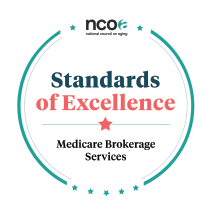Key Takeaways
Medicaid is a health insurance benefit for people with limited incomes.
People who have Medicare can also receive Medicaid, if they meet their state’s eligibility criteria. These people are often called “dual eligibles” or “duals.”
The Medicare Savings Programs are a specific sub-set of Medicaid benefits that help pay for the costs of Medicare.
What is Medicaid?
Medicaid is a state-run health insurance program that pays for a broad range of medical services for people with low income and resources. Each state runs its own Medicaid program, so eligibility and additional program benefits may vary by state. Basic services include doctor visits, inpatient and outpatient hospital services, lab tests, x-rays, medical transportation, family planning services, nursing facility services, home health, and nurse practitioner services. Medicaid also administers the federally funded Medicare Savings Programs.
Can people with Medicare also have Medicaid?
People who have Medicare can also receive Medicaid, if they meet their state’s eligibility criteria. These people are often called “dual eligibles” or “duals.” Medicaid can cover Medicare co-payments and deductibles and services not covered by Medicare that may be available in your state’s Medicaid program, such as vision, hearing, and dental care.
Medicaid is no longer the primary payer of prescription drugs for people who are enrolled in Medicare. People who have both Medicaid and Medicare will receive help paying for their prescriptions through Medicare Part D. In certain states, Medicaid may cover certain drugs that Medicare does not. In addition, people who are enrolled in both Medicaid and Medicare will automatically qualify for the Medicare Part D Low Income Subsidy (LIS/Extra Help).
What are the 4 Medicare Savings Programs?
Medicare Savings Programs (MSPs) are Medicaid-administered programs for people on Medicare who have limited income and resources. These programs help those qualified to afford Medicare. There are four different Medicare Savings Programs, each with different income and resource eligibility limits. These are the Medicare Savings Programs eligibility limits for 2021:
1. Qualified Medicare Beneficiary (QMB): People may qualify if they have income less than 100% of the Federal Poverty Level (FPL) and resources under $7,970 if single, $11,960 if married. If eligible, QMB will cover the Medicare premiums (Part A, if applicable, and Part B), deductibles, copayments and/or coinsurance. Monthly income limits include a $20 general income disregard; Alaska and Hawaii have slightly higher limits:
- Residents of 48 states & District of Columbia: $1,094/$1,472 single/married
- Alaska: $1,361/$1,835 single/married
- Hawaii: $1,255/$1,690 single/married
2. Specified Low-Income Beneficiary (SLMB): Seniors/adults with disabilities may qualify if they have income between 100-120% FPL and resources under $7,970 if single, $11,960 if married. If eligible, SLMB will cover the Medicare Part B premium ($148.50 in 2021). Monthly income limits include a $20 general income disregard; residents of Alaska and Hawaii have slightly higher income limits:
- Residents of 48 states & District of Columbia: $1,308/$1,762 single/married
- Alaska—$1,629/$2,197 single/married
- Hawaii—$1,502/$2,024 single/married
3. Qualifying Individual (QI): QI is a limited program (block-grant to states), and is available on a first-come, first-serve basis. People with Medicare may qualify if they have income between 120-135% FPL and resources under $7,970 if single, $11,960 if married. If eligible, QI will cover the Medicare Part B premium. Monthly income limits include a $20 general income disregard; Alaska and Hawaii have slightly higher limits:
- Residents of 48 states & District of Columbia: $1,469/$1,980 single/married
- Alaska: $1,831/$2,470 single/married
- Hawaii: $1,688/$2,275 single/married
4. Qualified Disabled Working Individual (QDWI): Adults under age 65 and disabled but who recently returned to work and are no longer eligible for premium-free Part A may qualify for QDWI. Their income must be at or below 200% FPL and their resources under $4,000 if single, $6,000 if married. However, there are additional earned income disregards that raise the income ceiling for QDWI up to 400% FPL. If eligible, QDWI will cover their Part A premium. Monthly income limits include a $20 general income disregard and a $65 earned income disregard; Alaska and Hawaii have slightly higher limits:
- Residents of 48 states & District of Columbia: $4,379/$5,892 single/married
- Alaska: $5,449/$7,342 single/married
- Hawaii: $5,025/$6,765 single/married
Note: The limits above are federal guidelines. Some states may choose to increase these federal guideline amounts or eliminate the resource test all together. Refer to your state eligibility rules.
What are the advantages of Medicare Savings Programs?
Seniors and younger adults with disabilities who may not qualify for full Medicaid may still be able to enroll in the Medicare Savings Programs. There are two major advantages to doing so:
- Saving money on Medicare costs. Three of the four MSPs cover the Medicare Part B premium, which in 2021 is $148.50 a month for individuals who receive help with their premiums . Enrollment in MSPs puts over $1,700 back into the wallets of seniors/adults with disabilities each year.
- Automatic Extra Help. Enrollment into MSPs automatically “deems” a person eligible to receive the Medicare Part D Low Income Subsidy (LIS/Extra Help). This benefit helps pay for prescription drugs and is estimated by the Social Security Administration to have an annual value of $5,000. Furthermore, if a senior/adult with disabilities is not already enrolled in Part D, they will have no late enrollment penalty if they receive Extra Help.
I’m an older adult/person living with a disability who may be eligible for these programs. Where can I get assistance?
If you believe you/someone you know may be eligible for these programs, you can get assistance from:
- NCOA's network of Benefits Enrollment Centers (BECs). BECs provide help for older adults/persons living with disabilities to apply for all of the benefits they may be missing.
- BenefitsCheckUp® is a free online tool that screens for eligibility for thousands of programs that can pay for health care, prescriptions, and more, including Medicaid and the MSPs.
- Your local State Health Insurance Assistance Program (SHIPs). SHIPs are federally funded to provide free, objective assistance to people with Medicare and their families, and also can help you apply for the Medicare Savings Programs and Part D Low Income Subsidy/Extra Help. Find your SHIP by visiting shiptacenter.org or calling 1-877-839-2675.
I’m a benefits counselor helping seniors apply for Medicare Savings Programs. Where can I get more information?
If you help older adults/persons with disabilities apply for MSPs, you might want to take advantage of several resources offered by our Center for Benefits Access. Be sure to check out the following:
- MSP eligibility chart
- Fact sheet on the treatment of the burial disregard in counting assets for LIS/MSP
- States’ options for streamlining access to MSPs through policy changes
I'm an older adult/caregiver and have additional questions about Medicare and need help. Where can I get more information?
If you need help sorting through your Medicare options, Medicare Choice Group (MCG) is a broker that meets NCOA’s Standards of Excellence. Both SHIPs and MCG are options that are committed to serving your Medicare selection needs and priorities at no cost to you. Learn more and connect with a licensed Medicare enrollment specialist today.











